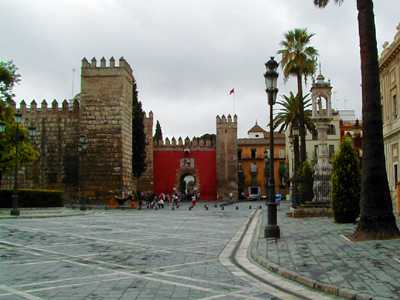
Puerta del León entrance to the Alcazar
Enter through the Puerta del León into the Patio de la Montería, which derived its name from the scouts (monteros), who accompanied the king in its hunting parties. Passing through the vast galleries and halls decorated in tiles and Mudéjar ceilings you reach the Patio de las Doncellas, which is the main courtyard.
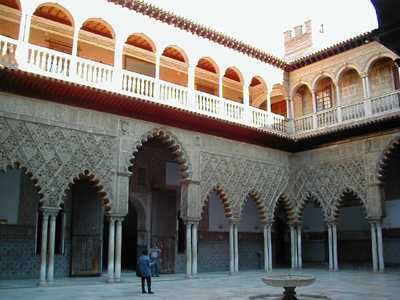
Patio de las Doncellas
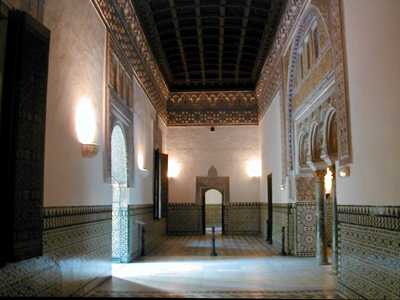
Hall of the Kings
The Hall of the Kings, the Hall of Charles V and the Hall of the Embassadors all open to this patio. The latter is the most important room in the Alcazar. It is covered in metal mirrors which reflect the light of the whole hall.
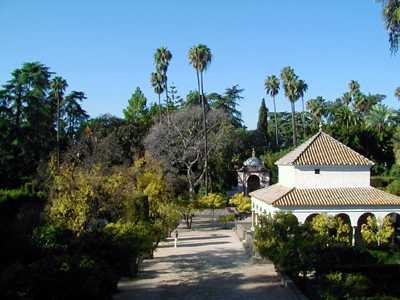
Alcazar gardens
The tour ends with a visit to the Gardens, in which a curious blend of different gardening styles (Arab, French and Renaissance style) can be admired.
Location
Text???.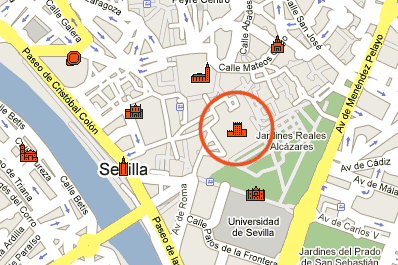
See the monument on interactive map
From the same age as the oldest parts of the Alcazar, is also another of Seville's best-known monuments, the Torre del Oro.
| Main Page | Apartments | Hotels | Hostels | Activities | Monuments | Sevilla Info | City Map |